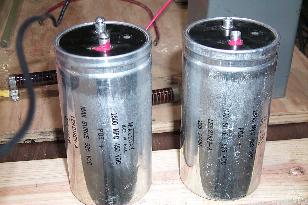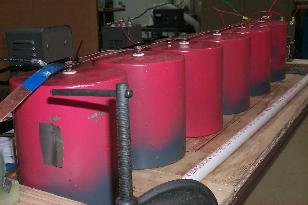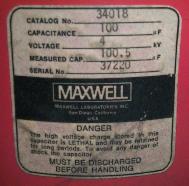A Tabletop Demonstration Railgun
The large current pulse needed is usually produced with a bank of capacitors, connected in
parallel to the rails. The magnitude and length of the current pulse depend on the resistance
and inductance of the wires, rails, and the projectile itself. After a limited amount of trying
to calculate/simulate what kind of pulse we would get a more experimental route was taken.
The initial power source was a 1.5 mF capacitor at 300 V, yielding the following energy:
E = ½ C V2 = ½ * 1.5 mF * (300V)2 = 67.5 J
This was followed by two capacitors at the same voltage (135 J) and then four (270 J).

Figure : The 1.5 mF caps
After this, new capacitors rated at a higher voltage were used, starting with one 100 mF capacitor at
1 kV (50 J). The voltage was then raised and more capacitors were added, ending with six
capacitors at 3 kV, storing 2.7 kJ. This gave a large enough current pulse to easily see the
acceleration in the projectile.

Figure : The final capacitor bank

Figure : Closeup of one of the capacitor's specs


